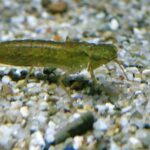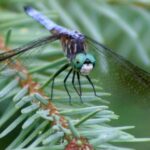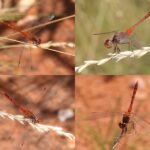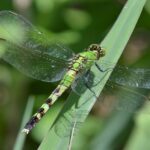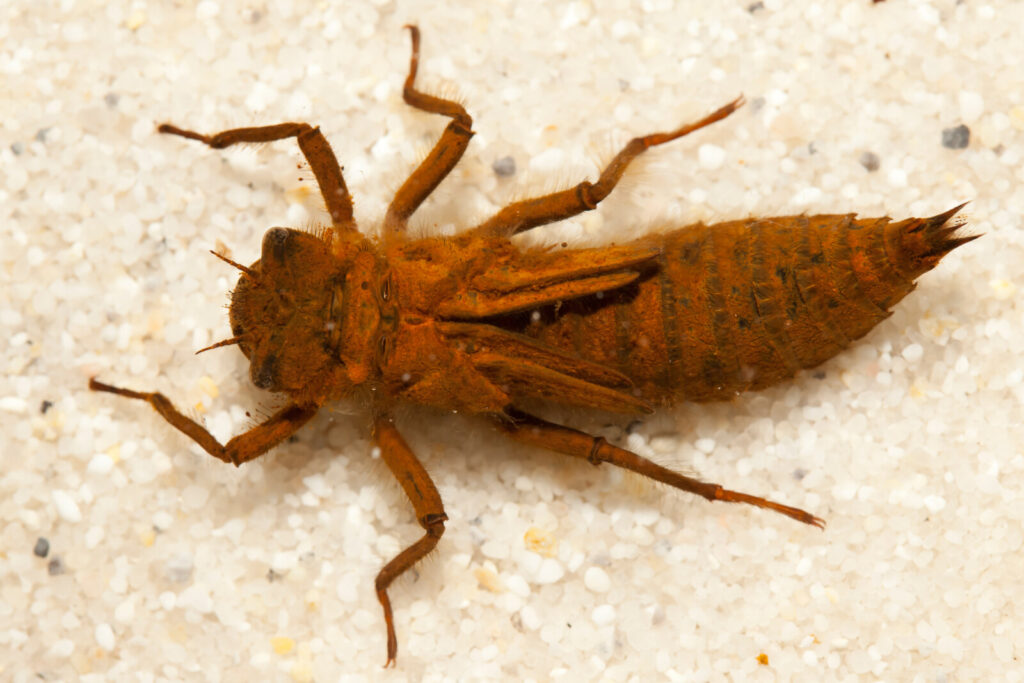
A voracious predator that will even eat other dragonflies, the golden-ringed dragonfly is the UK’s longest species. It can be found around acidic streams in moorland and heathland habitats.
Statistics:Length: 7.4-8.4cm
Conservation status:Common.
About
The golden-ringed dragonfly is a very large dragonfly that is on the wing from May to September. It is a dragonfly of small, acidic streams in moorland and heathland, and may be found away from its breeding sites. The female of this species is the UK’s longest dragonfly because of her long ovipositor. Golden-ringed dragonflies are voracious predators, feeding on large insects, such as damselflies, other dragonflies, wasps, beetles and bumblebees. They are fast, agile and powerful flyers.
How to identify
Both sexes of the golden-ringed dragonfly are black, with yellow bands along the body and bright-green eyes. Females are longer and thinner than the males, who display a ‘waisted’ appearance.
Did you know?
The larvae of the golden-ringed dragonfly live buried at the bottom of streams, ambushing prey as it passes by. They grow very slowly and may spend as long as five years in the water before they emerge to turn into a dragonfly.
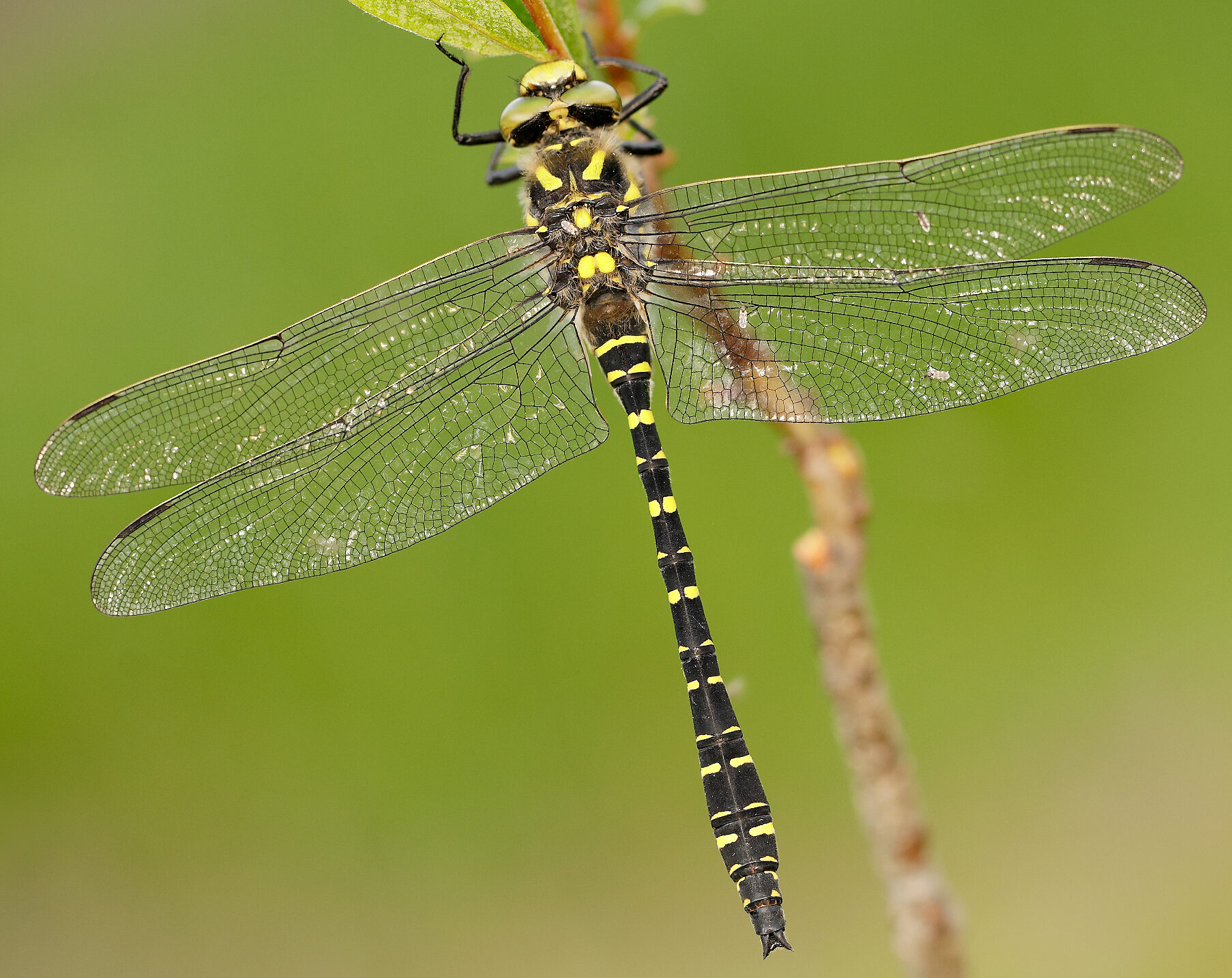
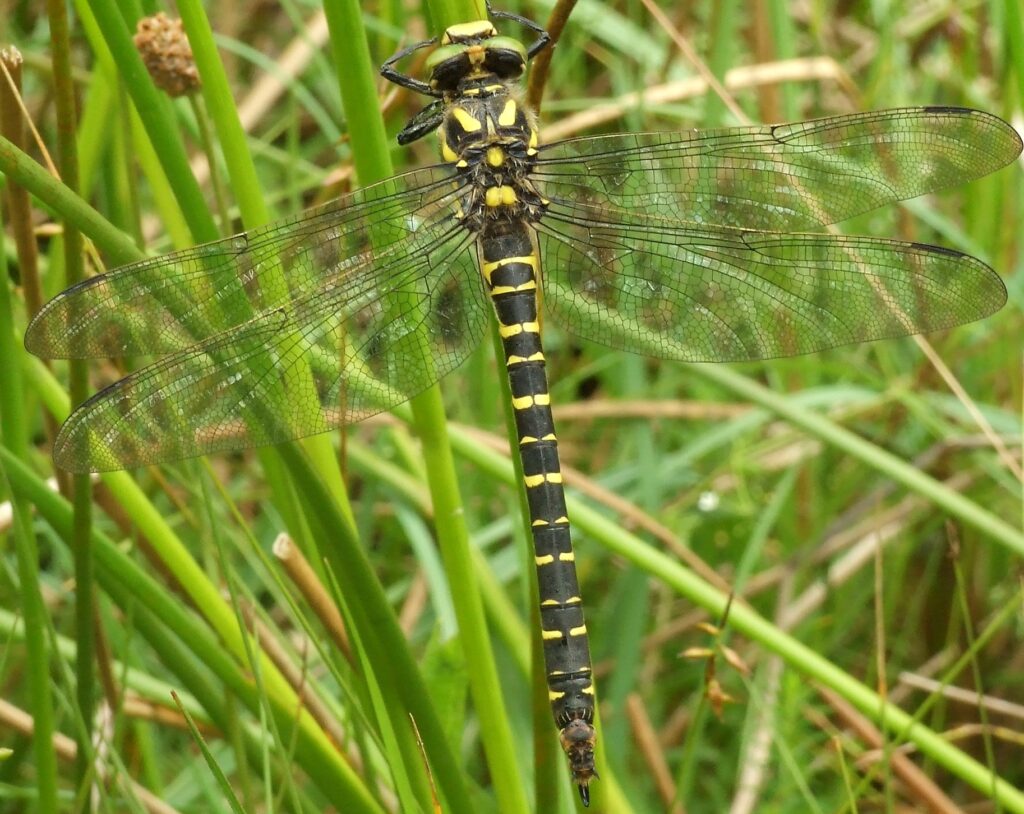
A striking, black insect with yellow rings along the length of the abdomen.
The female is the UK’s longest dragonfly because of her long ovipositor.
Male: a slight club shape to the abdomen.
Female: more parallel sided and has a very long ovipositor.
Habitat:Breeds in acidic rivers and streams of all sizes. May be found away from its breeding habitat over heathland.
Larval Information
Similar long body shape to Hawker but more robust and with a broader head.
Obvious setae (hairs).
Jagged jaws to the mask.
Adult Identification
- Length Male: 74mm
- Length Female : 84mm
- Distinctive yellow and black rings.
- Bright green eyes that only meet at the top of the head.
- Male: a slight club shape to the abdomen.
- Female: more parallel sided and has a very long ovipositor.
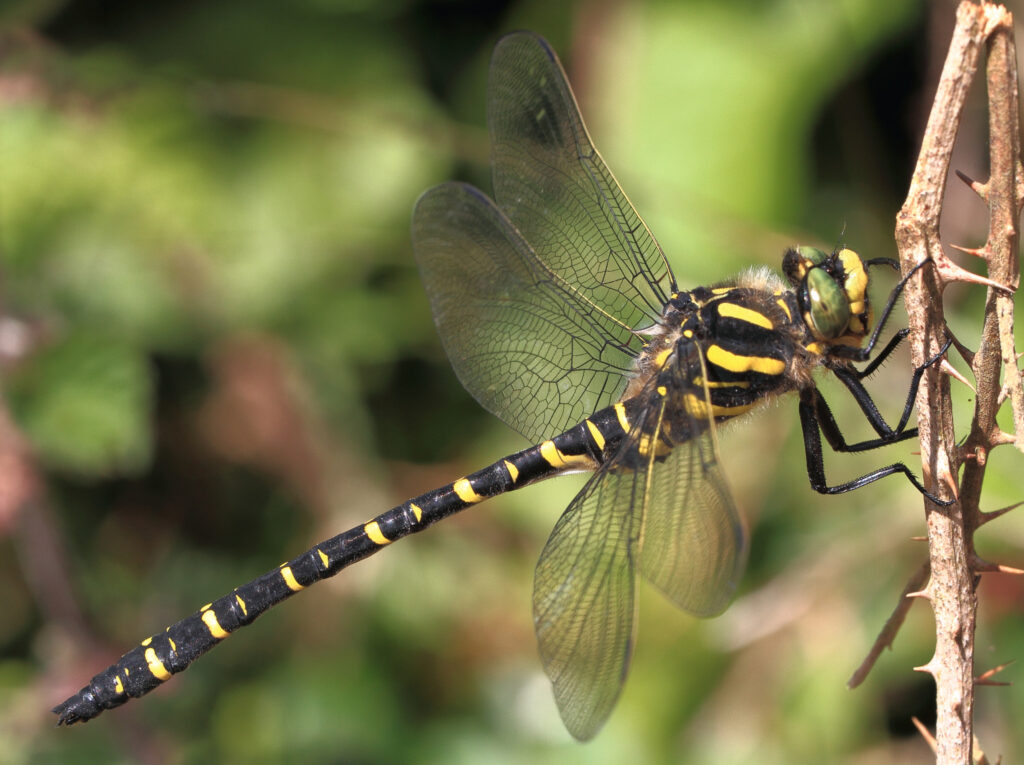
Golden-ringed Dragonfly Facts
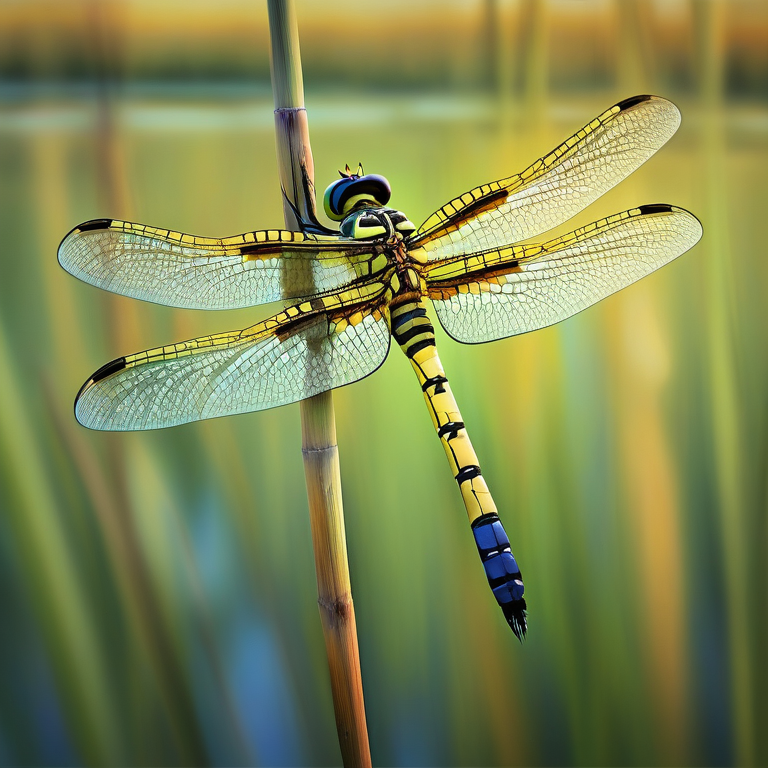
Key Highlights
- The Golden-ringed Dragonfly, scientifically known as Corduleg boltonii, is a large and insect with a black body patterned with rings and bright green eyes.
- It is the largest dragonfly in terms of body length, with males measuring around 7.5cm and females measuring around 8.5cm.
- This dragonfly is commonly found in acidic rivers and streams, as well as wet heathlands and moors.
- The Golden-ringed Dragonfly is widely distributed in southern England, Wales, and the western side of northern England and Scotland.
- It is an important predator in its ecosystem, feeding on a variety of prey including damselflies, wasps, beetles, and even other dragonflies.
- Conservation efforts are being made to protect the Golden-ringed Dragonfly and its habitats due to distribution challenges and the need to maintain biodiversity in ecosystems.
Introduction
Before delving into the intricate details of the Golden-ringed Dragonfly, it’s important to grasp the essence of this mesmerizing creature. With its distinctive black-and-yellow stripes and a noticeable long ovipositor at the end of the abdomen, this species, scientifically known as Cordulegaster boltonii, is a sight to behold. Encountered mainly in acidic streams and rivers across Southern England and Scotland, this large dragonfly captivates enthusiasts and researchers alike with its unique colouration and remarkable wingspan.
Understanding the Golden-ringed Dragonfly
The Golden-ringed dragonfly, scientifically known as Cordulegaster boltonii, is a large dragonfly species found in acidic streams and rivers across Europe. This impressive insect boasts a black body with bright green eyes and a distinctive black abdomen. Known for its long ovipositor at the end of the abdomen, this dragonfly species is a sight to behold in the wild. With a wingspan that catches the eye, the Golden-ringed dragonfly is a prized sighting for both casual observers and dedicated dragonfly enthusiasts.
Identifying Features and Characteristics
The Golden-ringed Dragonfly, scientifically known as Cordulegaster Boltonii, boasts a striking appearance with its long ovipositor and bright green eyes. This large dragonfly, mostly found in acidic streams of southern England and Scotland, is easily identified by its black abdomen and body. One distinguishing feature is the black band at the top of the head, separating it from other similar species like the Emperor Dragonfly or the Black Darter. Its impressive wingspan and unique colouring make it a standout species in the British dragonfly community.
The Lifecycle and Growth Phases
Golden-ringed dragonflies undergo a fascinating lifecycle characterized by distinct growth phases. Starting as eggs laid near water, they hatch into aquatic larvae, known as nymphs, living in streams. After molting several times, they transform into adults with their iconic black and yellow striped bodies. The newly emerged dragonflies need to wait for their wings to harden before embarking on their aerial adventures. This metamorphosis from aquatic nymphs to aerial predators showcases the remarkable adaptation of the Golden-ringed dragonfly.
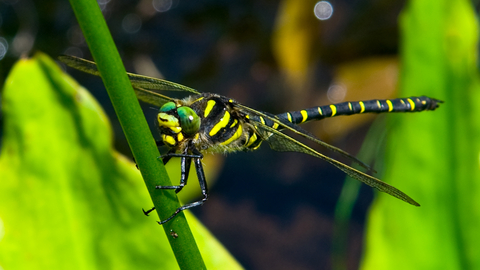
Habitats and Geographical Distribution
Preferred by acidic streams, the Golden-ringed dragonflies (Cordulegaster Boltonii) thrive in areas like heathland and wetlands, commonly spotted in Southern England and Scotland. These large dragonflies also frequent Ireland and Wales, with sightings verified by the British Dragonfly Society. Their presence indicates healthy ecosystems, especially near gravel-bottom streambeds. Interestingly, their range extends to Europe, showcasing their adaptability to various habitats and confirming their status as an iconic British dragonfly species.
Preferred Environments Across the Globe
Golden-ringed dragonflies thrive in pristine habitats, especially near acidic streams and rivers. They favor locations with abundant wetlands, gravel-bottomed streams, and heathlands. These large dragonflies are commonly found in Southern England, Scotland, and Wales. Their preference for such environments reflects their need for clean water sources for reproduction and ample prey availability. The acidic rivers of these regions serve as ideal breeding grounds for the golden-ringed dragonflies, making them a vital part of these ecosystems.
Conservation Status and Distribution Challenges
Golden-ringed dragonflies face conservation challenges due to habitat loss in the acidic streams they inhabit. The decline in suitable environments, particularly in Southern England and Scotland, poses a threat to their existence. Despite efforts by organizations like the British Dragonfly Society, preserving their habitats remains crucial. Human activities impacting water quality and streambed alterations contribute to the struggle for their survival. Conservation measures need to address these issues to safeguard the future of this magnificent species.
Behavior and Diet
Golden-ringed dragonflies exhibit fascinating behaviors and dietary habits. They are efficient predators, feeding on small insects like flies and mosquitoes. With their exceptional flying skills, they hunt their prey mid-air or near water bodies. Mating rituals are intricate, involving intricate flight patterns and courtship displays. These dragonflies also play a crucial role in controlling insect populations within their ecosystems, contributing to a balanced food chain. Their remarkable behavior and diet showcase their importance in maintaining ecological harmony.
Feeding Habits: Prey and Predators
Golden-ringed dragonflies primarily prey upon various flying insects such as mayflies, mosquitoes, and butterflies, showcasing their prowess as adept predators. Their exceptional hunting skills are further enhanced by their agile flight patterns, enabling them to capture prey with precision. In turn, these dragonflies fall prey to birds, frogs, and larger insects, forming a vital link in the predator-prey chain within their ecosystems. This intricate web of interactions highlights the crucial role golden-ringed dragonflies play in maintaining ecological balance.
Reproductive Behavior and Mating Rituals
Golden-ringed dragonflies engage in elaborate mating rituals where males use their long ovipositor to clasp females behind their head. This behavior ensures a successful transfer of sperm. After mating, females lay eggs in acidic streams where their larvae will develop. The process is crucial for the survival and continuation of their species.
Significance in Ecosystems
Golden-ringed dragonflies play a crucial role in ecosystems by aiding in pollination and contributing to biodiversity. Being voracious predators, they help control insect populations, maintaining a balance in the food chain. Their interactions with various species promote a healthy ecosystem by regulating insect numbers. As key pollinators, they assist in plant reproduction, supporting the growth of vegetation crucial for the ecosystem’s stability and sustenance. This intricate web of connections underscores the significance of golden-ringed dragonflies in sustaining ecological harmony.
Role in Pollination and Biodiversity
Golden-ringed dragonflies play a crucial role in pollination, aiding in plant reproduction by transferring pollen between flowers. As important predators, they help control insect populations, contributing to ecosystem balance and biodiversity. Their presence indicates a healthy environment as they rely on clean freshwater habitats for their lifecycle. By actively participating in pollination and serving as a part of the food chain, these dragonflies contribute significantly to the overall health and diversity of their ecosystems.
Interaction with Other Species
Golden-ringed dragonflies exhibit territorial behavior and may engage in aggressive interactions with their own species and other dragonflies. They are known to compete for resources, including hunting grounds and mates. In some cases, they compete with larger dragonfly species such as the emperor dragonfly. These interactions play a crucial role in shaping the ecosystem dynamics within their habitats, influencing population sizes and distribution patterns. The interactions also highlight the interconnectedness of different species in their environment.
Threats and Conservation Efforts
Threats to the golden-ringed dragonfly include habitat loss due to urbanization and pollution impacting its acidic stream homes. Conservation efforts focus on preserving these vital environments and raising awareness about the species. The British Dragonfly Society plays a key role in monitoring populations and advocating for habitat protection. Engaging the public through social media platforms like Facebook helps gather data on sightings, aiding in conservation strategies for this stunning species.
Human Impact on Habitats
Human impact on habitats has had a significant effect on the Golden-ringed Dragonfly population. The destruction and degradation of their preferred habitats, such as acidic rivers and streams, have led to a decline in their numbers. Pollution, habitat loss due to urbanization and agriculture, and climate change have all contributed to the decline of this species. Conservation efforts are crucial in protecting the habitats of the Golden-ringed Dragonfly and ensuring their survival. Efforts are being made to restore and create suitable habitats, as well as raising awareness about the importance of conserving these unique insects.
Conservation Strategies and Protective Measures
Conservation strategies and protective measures are essential in safeguarding the Golden-ringed Dragonfly and its habitats. These strategies include habitat restoration and creation projects, as well as the implementation of conservation actions such as water quality monitoring and management. By protecting and restoring their preferred habitats, we can ensure the survival of this species. Additionally, raising public awareness about the importance of dragonfly conservation can help garner support for protective measures. Engaging local communities and involving them in monitoring and conservation efforts can also have a positive impact on the Golden-ringed Dragonfly population.
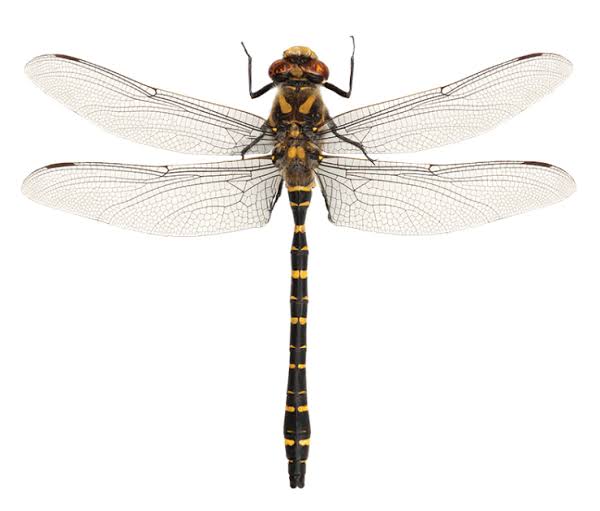
Observing Golden-ringed Dragonflies
Observing Golden-ringed Dragonflies can be a fascinating experience. These large and striking insects can be found near their preferred habitats, such as rivers, streams, ponds, and wet heaths. The best times to observe them are from late May or early June until the end of September in the south of Britain. It is advisable to seek the guidance of a local expert or join a dragonfly watching group to enhance your chances of spotting these magnificent creatures. Patience and a keen eye are essential when observing Golden-ringed Dragonflies in their natural habitats.
Best Times and Locations for Observation
The best times to observe Golden-ringed Dragonflies are from late May or early June until the end of September in the south of Britain. During this period, they are most active, and their populations are more abundant. To increase your chances of spotting these dragonflies, it is recommended to visit their preferred habitats, such as acidic rivers and streams, ponds, lakes, wet heaths, and moors. Look out for them near flowing water and keep an eye on areas with suitable vegetation for perching. If you are new to dragonfly watching, it is advisable to join a local expert-led group or seek the guidance of experienced dragonfly enthusiasts who can help you identify and locate these magnificent insects.
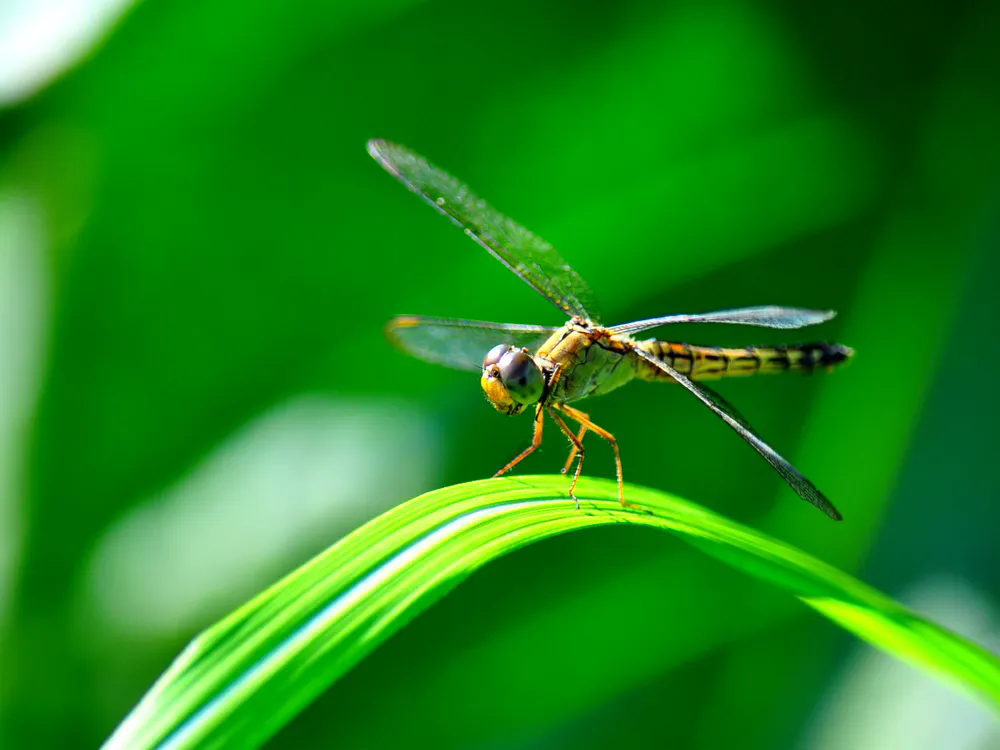
Photography and Watching Tips
Photographing and watching Golden-ringed Dragonflies can be a rewarding experience for nature enthusiasts and photographers alike. Here are a few tips to enhance your dragonfly sighting and photography experience:
- Use a telephoto lens or macro lens for close-up shots of the dragonfly’s intricate details.
- Approach slowly and quietly to avoid startling the dragonfly.
- Observe their behavior and learn their flight patterns to anticipate their movements.
- Look for perching spots near the water’s edge or on vegetation where they may rest.
- Use a fast shutter speed to capture their swift movements in flight.
- Pay attention to lighting conditions and try to photograph them during the golden hour for soft, warm light.
- Remember to respect their natural habitats and not disturb or harm the dragonflies while observing or photographing them.
Cultural and Symbolic Meanings
The Golden-ringed Dragonfly holds cultural and symbolic meanings in various cultures. Its striking appearance and behavior have inspired folklore, art, and literature throughout history. These dragonflies are often associated with strength, transformation, and agility. In some cultures, they are seen as symbols of good fortune, protection, and harmony with nature. The Golden-ringed Dragonfly’s presence in myths and legends adds to its allure and mystique. Its beauty and significance make it a subject of fascination for many artists and writers.
Historical Significance and Folklore
The Golden-ringed Dragonfly has historical significance and is deeply rooted in folklore. In some cultures, it is believed that encountering a Golden-ringed Dragonfly brings good luck and prosperity. These dragonflies have also been associated with transformation and change due to their impressive metamorphosis from larvae to adults. In folklore, they are often depicted as protectors or messengers from the spiritual realm. The striking appearance and behavior of Golden-ringed Dragonflies have captivated the human imagination for centuries, inspiring stories, poems, and artwork. Their presence in folklore highlights the cultural significance and symbolic meanings attributed to these magnificent creatures.
Symbolism in Art and Literature
The Golden-ringed Dragonfly has been a subject of inspiration in art and literature. Its vibrant colors, intricate patterns, and graceful flight have captivated artists and writers throughout history. In art, the Golden-ringed Dragonfly is often depicted as a symbol of beauty, grace, and transformation. Its image can be found in paintings, sculptures, and decorative arts. In literature, this dragonfly has been featured in poems, stories, and myths, symbolizing various themes such as change, freedom, and the fleeting nature of life. The Golden-ringed Dragonfly’s symbolism in art and literature reflects its cultural significance and the fascination it holds for humanity.
The Golden-ringed Dragonfly is not just a creature of beauty but also plays a crucial role in maintaining the ecosystem’s balance. Understanding its lifecycle, habitats, and significance in biodiversity sheds light on the importance of conservation efforts. By observing their behavior and diet, we can appreciate their unique role in pollination. However, human impact poses a threat to their habitats, making it essential to implement conservation strategies. By learning more about these magnificent creatures and their cultural significance, we can foster a deeper connection to nature and strive to protect these delicate beings for generations to come.
Golden-ringed dragonfly
On a recent trip to the New Forest with colleagues to undertake a day of river and stream metric assessment training, I watched a mighty dragonfly quartering where we sat at lunch on the riverbank, hunting its prey, only to get a better look at her as she was still for a fleeting moment to stab her abdomen into the streambed – laying her eggs. It was a golden-ringed dragonfly (Cordulegaster boltonii).
The golden-ringed dragonfly is a very large, striking dragonfly, on the wing from May to September, and the female is the UK’s longest dragonfly (because of her long ovipositor). It is a dragonfly of small, acidic streams in moorland and heathland, found in west Scotland, Cumbria, southern England and Wales, and may be seen away from its breeding sites hunting across the heather and surrounding habitats. Golden-ringed dragonfly are fast, agile and powerful flyers, which aids them well as a voracious predator, feeding on large insects, such as damselflies, wasps, beetles, bumblebees and other dragonflies.
As the name denotes, the golden-ringed dragonfly has bright yellow-gold bands along an otherwise black body, looking like huge, thin wasps with bright green eyes. Both male and female have the same colouring but display subtle differences to enable identifying which sex it is. Females are longer and thinner than the males and display a ‘waisted’ appearance.
Dragonflies have an interesting life cycle, starting with the egg. Adult females lay hundreds of eggs in batches over a few days or even weeks, depending on the species – either endophytic (elongated in shape and laid into plant material) or exophytic eggs (round in shape, laid in a jelly-like substance and deposited loosely into water). Golden-ringed dragonflies lay endophytic eggs by hovering vertically and stabbing their abdomen into cold streambeds; this action means the eggs are less likely to be washed away by the current. The eggs hatch at different timescales depending on the species, either within 2–5 weeks or, in the case of the emerald damselflies and some hawkers and darters, the following spring.
Dragonflies spend most of their lives in their larval stage. During this time, golden-ringed dragonflies live buried at the bottom of streams, ambushing prey as it passes by at every opportunity, moulting a further 5-14 times until fully grown. Larval development typically takes one or two years, but ranges from 2–3 months (emerald damselflies) to more than five years for the golden-ringed dragonfly. This is because development takes longer in cooler waters where food is scarcer, while the species of dragonflies that lay their eggs in warmer still waters may have a new generation every year.
Dragonflies undergo incomplete metamorphosis; unlike other winged insects, such as butterflies, dragonflies transition straight from a larva to an adult. This transition, the final larval moult, takes place out of water when the larvae climb up emergent vegetation (reeds and rushes) and, finding a secure support, redistribute their body fluids, pushing the thorax, head, legs and wings out of the larval skin. There is then a pause of about 30 minutes to allow their legs to harden enough for the next stage, when the abdomen is withdrawn. The wings, and then the abdomen, are expanded and start to harden. This process leaves behind a cast skin, called an exuvia (one of my favourite words!), and the whole process lasts about three hours. As a child I used to collect the exuvia I found left clinging to bullrushes and reeds – a fascinating wild ‘treasure’ to find and something to scare a sibling with!
Frequently Asked Questions
What Makes Golden-ringed Dragonflies Unique?
Golden-ringed Dragonflies are unique due to their distinctive black body patterned with gold rings, bright green eyes, and long ovipositor. They are the largest British dragonfly by body length and are known for their voracious predatory behavior.

